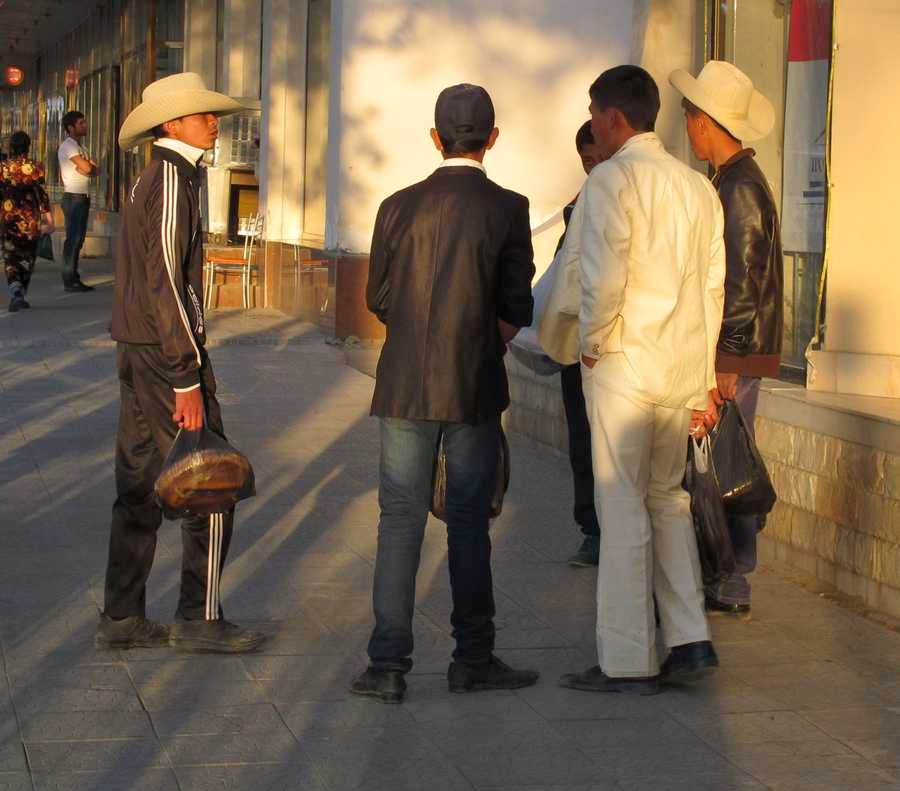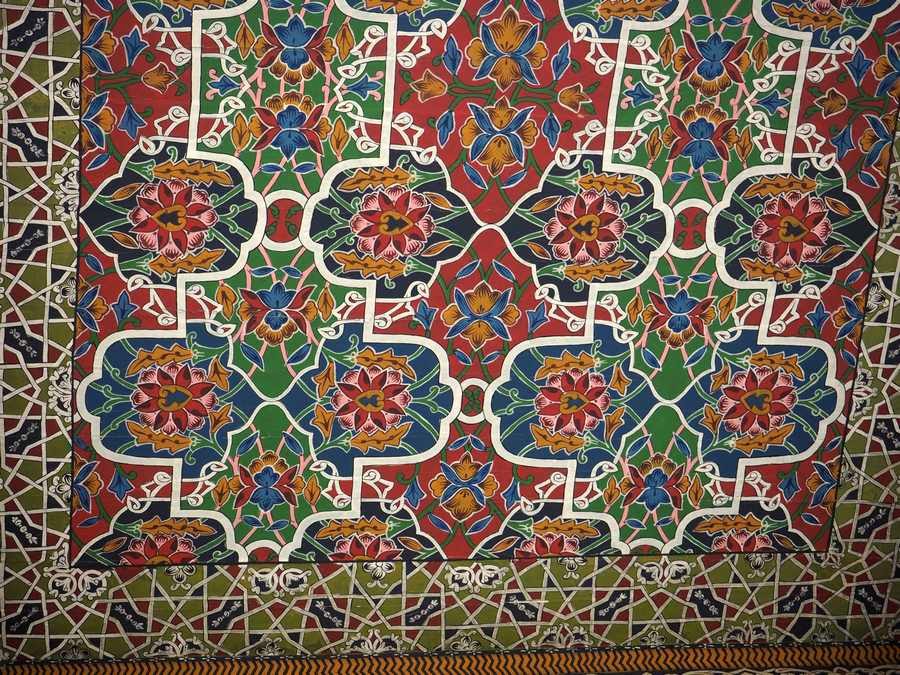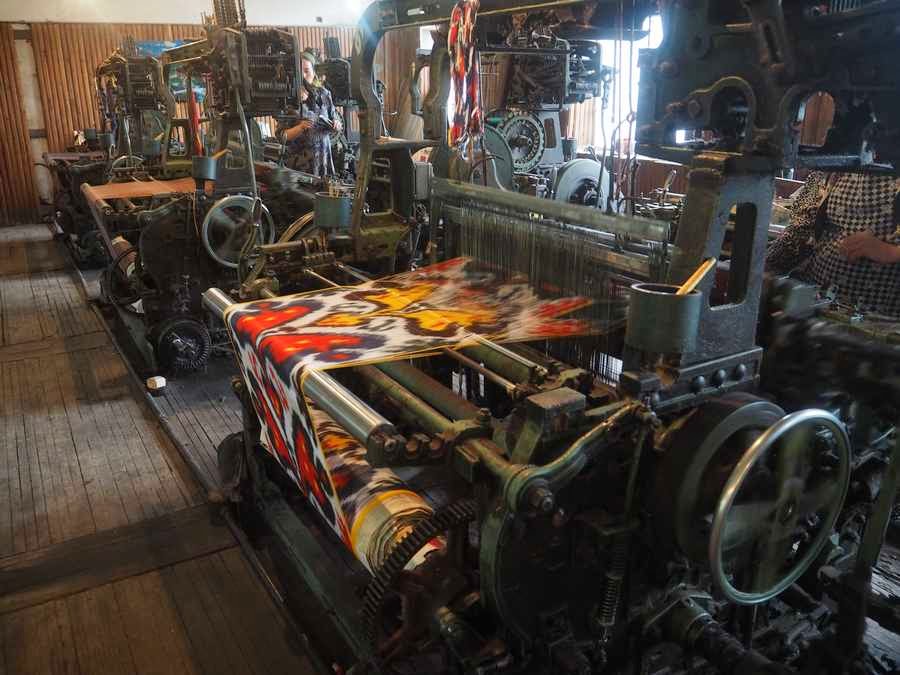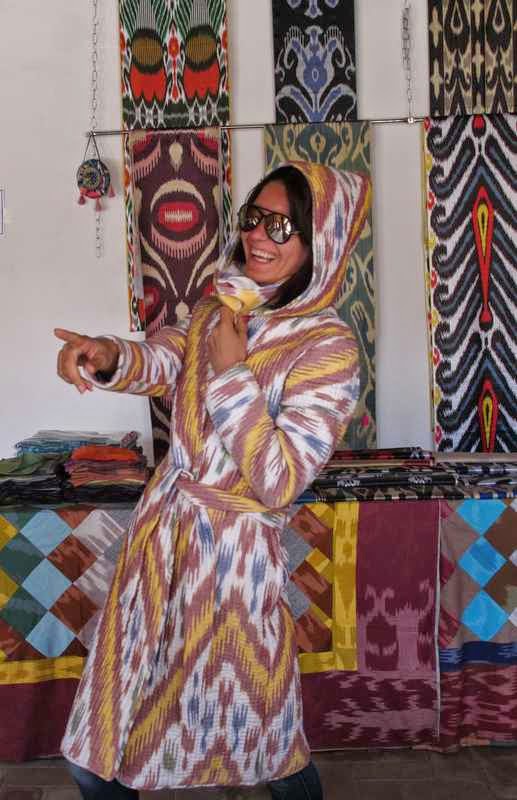The following morning we left for the Fergana Valley. It has always been known as one of the most fertile regions in Central Asia and today 8 million or one quarter of Uzbekistan's population lives here.
In the 19thC it was under the Khan of Kokand, the largest of the 3 khanates who ruled present day Uzbekistan and beyond (the other two khanates were Khiva and Bokhara). It is the most conservative and Islamic part of Uzbekistan and is also known for its handcrafts particularly Rishton pottery and ikat silk weaving at Margilon.
It was a long drive to Fergana and in parts a very slow road over the Kanchik Pass at 2267m with major roadworks and where there were still drifts of snow. Unfortunately because of the industrialization the air was not clear, even though many factories are now derelict.
On the way there lots of people planting spring flowers along the roads and in towns at the roundabouts.
On 29th April we returned to Tashkent but it was a very long day. We started at 8.30 and visited various sites around the Fergana Valley until about 3 pm when we finally set off for Tashkent arriving there after 9 pm. It hardly seemed worth checking in as we had to leave the hotel at 11 to catch the 2 a.m. flight to Bishkek, but we persuaded the hotel to provide us with a breakfast box at 10.40 p.m. which we ate in the lobby.
A final Samarkand picture - the Wild West..
Dinner in a posh yurt in Tashkent and very nice it was.
A group of Uzbeki men enjoying lunch in a roadside cafe along the Fergana Valley road.
This aivan (portico) in the Jumi mosque in Kokand is supported with 98 red wood columns brought from India at the end of the18thC.
Gorgeously painted wooden ceiling in the Aiwan.
Bibi our guide watching a potter at work in Rishton. The local clay is of an exceptionally high quality and requires no additives. The traditional green and blue Islamic designs are very attractive.
Hand painting tiles in Rishton.
We visited the Yodgorlik Silk Factory in Margilon. This girl is plying the silk from about 30 cocoons.
The vats for boiling the dyes (mostly natural)
Laying out the warp threads ready for weaving. A modern innovation is to use sellotape instead of cotton thread to tie the bundles of thread together.
Machine weaving Ikat. This is much faster than hand weaving, but also much noisier!
Bibi models a padded cotton Ikat coat.
The Jumi mosque in Andijon survived the 1902 earthquake. Its design and its minarets are more Indian or Persian than Central Asian.
More conservative women's dress in the Fergana valley towns.
Vegetable/Herb sellers in Andijon market.


















That painted ceiling is just beautiful. I love the colours.
ReplyDeleteWonderful patterns again. Love the ikat weaving!
ReplyDeletethis central asian influence can even be noticed as far as in INDIA Himachal pradesh......
ReplyDelete